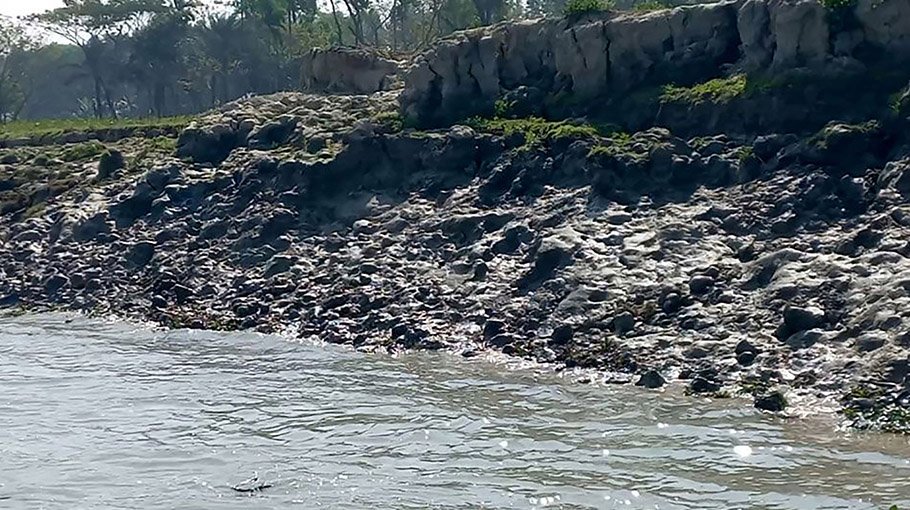Barguna people fear losing homesteads for lack of sustainable embankment

The people of Borguna are living under the constant threat of being ravaged by natural disaster as there is no sustainable embankment in the district.
According to the Water Development Board, only 78 kilometers of the 850 kilometers of embankments in Barguna are considered permanent and sustainable.
On November 15 in 2007, the powerful Cyclone Sidr devastated the coastal areas of Barguna, claiming thousands of lives and leaving millions of families destitute. Although 17 years have passed since the cyclone, no sustainable embankments have been built in the coastal region of Barguna.
In that devastating Cyclone, 1,345 people lost their lives in Barguna district, 77,000 houses were destroyed, and 484 kilometers of embankments were damaged. Even after 17 years, due to the lack of sustainable embankments in Barguna, entire villages are flooded every year during the new moon or full moon, or even by minor cyclones. This causes severe damage to crops and homes, and people lose their livelihoods, security, and the assurance of a safe place to live. The terrifying memories of Sidr still haunt the people of the coastal region.
Mohammad Aslam Khan, a resident of Dhalbhanga village in Barguna sadar upazila, said that although he survived Cyclone Sidr on November 15 in 2007, he lost his wife and child. The memory of that terrifying night still haunts him. He expressed his frustration, saying, for 17 years, I have been dreaming of a sustainable embankment, but it has not yet been realized. No one wants to hear about our suffering.
Environmental activist Riaz Ahmed Musa emphasized that the primary demand of the people of Barguna is to increase the height of the embankments and provide a permanent solution. ‘Living in constant fear of disasters, people are waiting for immediate action to build sustainable embankments. Promises have been made for years, but these solutions have only remained on paper,’ he said.
Monir Hossain Kamal, president of the Conscious Citizens Committee (SANAC) in Barguna, told Jugantor, “Almost all the embankments in Barguna were designed during the Pakistan era, and there is no permanent embankment to match the needs. As a result, every cyclone damages the riverbank areas of Barguna. There are also many places where even a small rise in the tide submerges homes. Our demand is to construct taller and more durable embankments, but we repeatedly hear that the Water Development Board has no sufficient government funding, and the small amounts that are allocated are just nominal.”
He further criticized the implementation of the allocated funds, saying, “Even when funding is allocated, it is often misused by contractors and relevant authorities. In my opinion, with these current embankments, it is not possible to protect the coastal areas from tidal surges or cyclones.”
According to the Water Development Board, there are approximately 805 kilometers of embankments in Barguna, of which around 450 kilometers are of low height and remain at significant risk every year. Recently, work has been completed on the protection of 13 kilometers of embankment shores, 9 kilometers of embankment slopes, and repairs on 51 kilometers of embankments, at a cost of Tk 1,577 crore. Additionally, the construction of 50 kilometers of sustainable embankments is currently underway.
Md. Rakib, the Executive Engineer of the Barguna Water Development Board, told Jugantor, there are 850 kilometers of embankments in Barguna. When these embankments are damaged by natural disasters, we repair them as part of an ongoing process. Currently, we have 78 kilometers of permanent embankments, and several projects for additional sustainable embankments are in the proposal stage.



